Candied Orange Peel
This post may contain affiliate links. See my disclosure policy.
Making your own candied orange peel and candied lemon peel is super easy and the difference between homemade and store-bought is absolutely mind-blowing! Leave the store-bought stuff on the shelf because nothing, and I mean NOTHING compares to homemade! This candied orange peel recipe can be used to make any variety of candied citrus peel, including orange, lemon, lime, and grapefruit.

Why You Should Make Candied Orange Peel
If you’ve never made your own candied orange peel get ready to be absolutely dazzled!
Today we’re going to make delicious use of a portion of the citrus fruit you may normally discard by making candied citrus peels. Think of these delightful sweet treats like citrus flavor on steroids!
While candied orange and candied lemon are the the most commonly used, candied grapefruit and lime also have a delicious place in the mix and I’m going to demonstrate the process using those as well.
There are a few reasons you should make your own candied peel: 1) The store-bought stuff is generally not organic and citrus fruits are highly sprayed with pesticides and fungicides. 2) It’s made with a lot of chemicals. 3) It’s not fresh. 4) Most of it tastes bad. Like really bad. I regularly have readers request recommendations for good brands of candied citrus and the best recommendation that I can offer is to make your own! Because once you do and taste the difference, you’ll never buy it again.
The good news is, it is SO easy to make your own! And it keeps for a long time, especially if you freeze it. The flavor is 100% better than store-bought and will bring your baked goods to life.

How to Use Candied Orange Peel
There are so many delicious ways you can use candied orange peel and any candied citrus peel variety, whether orange, lemon, lime or grapefruit. (Be sure to also try my Candied Ginger). Here just are a few ideas:
- Baked in pies, cakes, muffins and cupcakes (see my Stollen, Figgy Pudding, Lebkuchen, Dundee Cake, Bara Brith, Barmbrack, Eccles Cakes, and Panettone)
- Added to Scottish Shortbread, cookies, and scones
- Sprinkled over ice cream or Homemade Greek Yogurt
- Added to Healthy Homemade Granola
- As garnish for citrus-flavored drinks
- Use in traditional English Mincemeat
- Baked into waffles and pancakes (see my Whole Wheat Sourdough Waffles)
- Dipped in chocolate for an elegant sweet treat (dip candied orange peels in chocolate to make orangettes, a classic French confection)

Candied Orange Peel Recipe
Let’s get started!
*NOTE: The process is the same for making any kind of candied citrus peel.
Select the best citrus fruits possible and give them a thorough scrubbing and washing. We’re not sticklers about buying all of our produce organic, but we do stick to organic for certain items that are highly sprayed and/or waxed. And in the case of citrus fruits, if I’m using the peels for zesting or candying, I use and recommend organic.
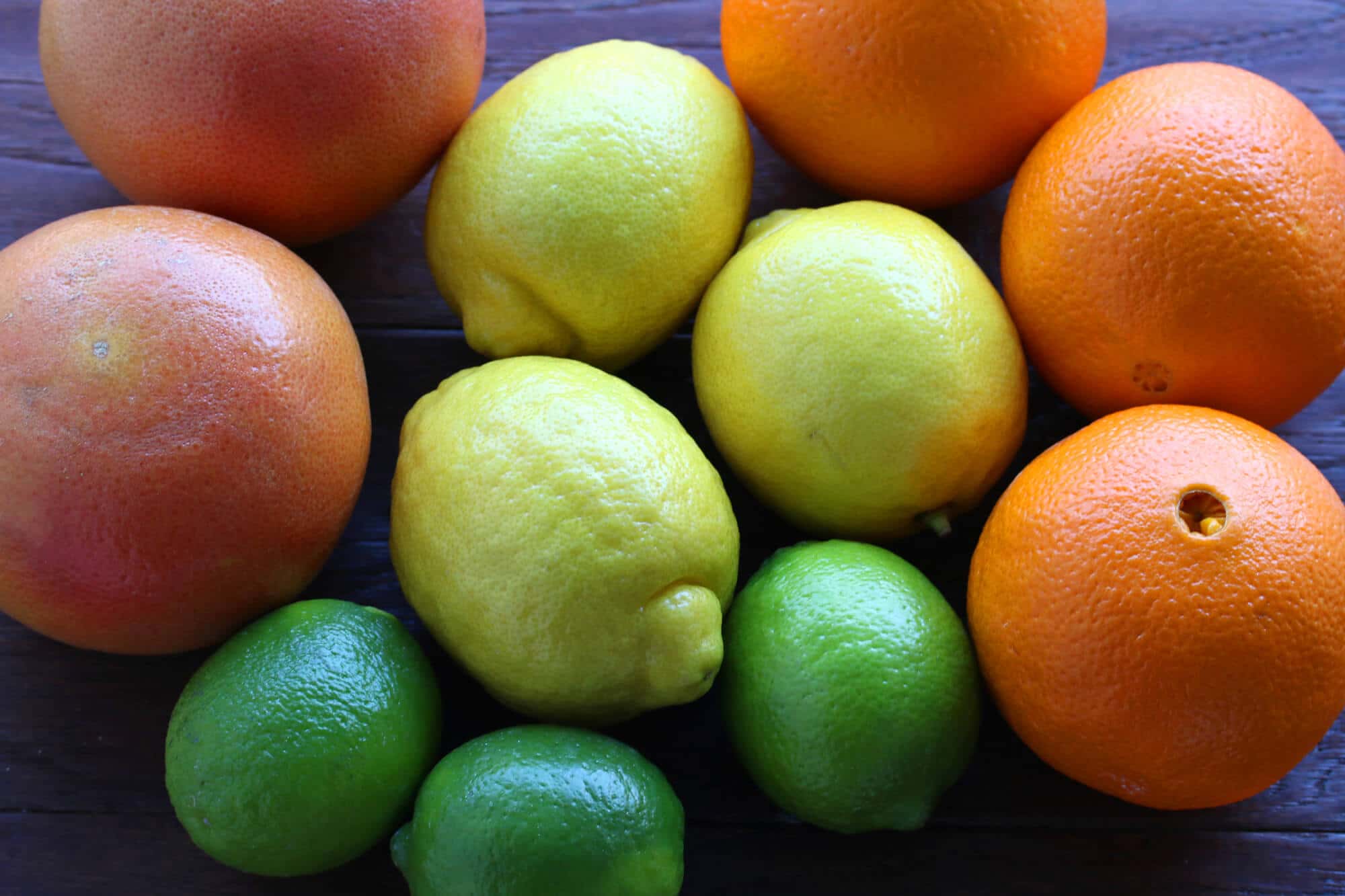
Slice both ends of the orange. Cut the peel on each each into 4 or more vertical segments, depending on the size of the fruit. Peel off each segment of rind.
Note: You can remove a some of the white pith, though not necessary. The white pith has a bitter flavor, so keep that in mind, but also keep in mind that the thinner your peels the harder/more leathery they will be. The purpose for blanching the peels (boiling in water and discarding the water) is to eliminate some of the bitterness. If leaving the pith on you can repeat the blanching procedure 2 or 3 times to reduce the bitterness.
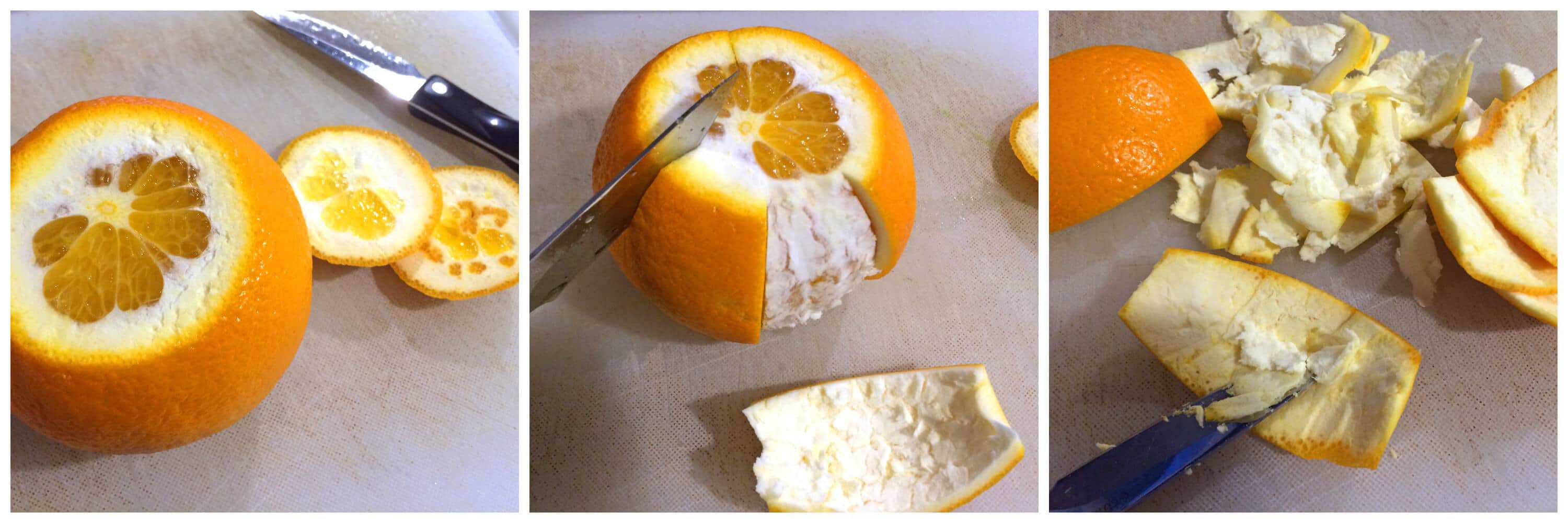
The process is the same for any citrus fruit. Candied grapefruit peel, candied lemon peel, candied lime peel, candied mandarin or clementine peel…they’re all delicious!
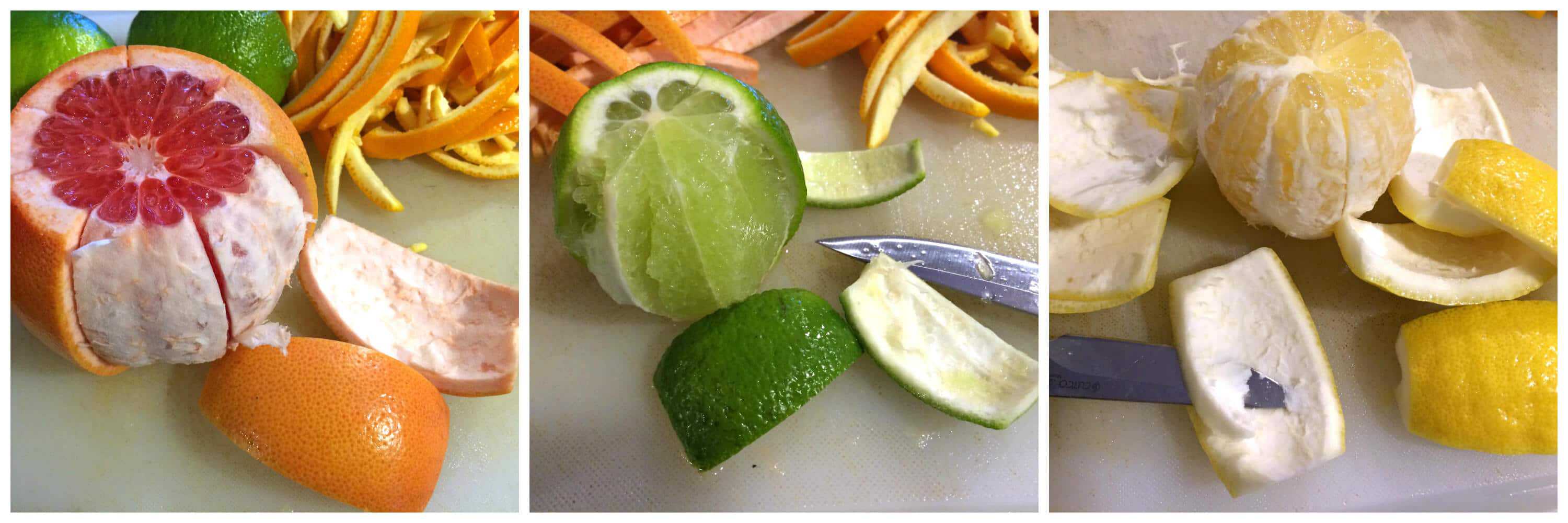
Slice the peels into 1/4 inch wide strips.
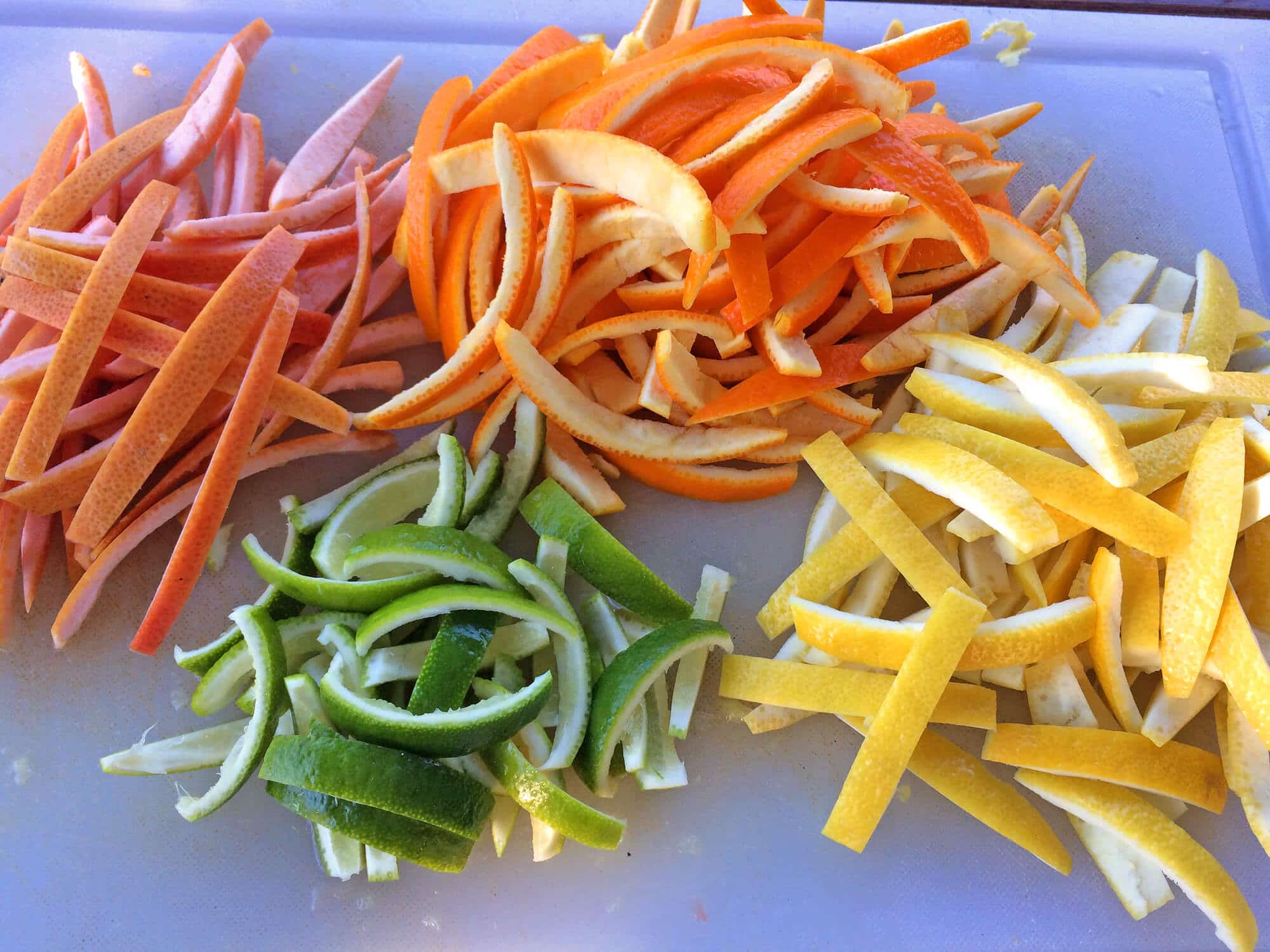
Keep the peeled citrus for eating, cooking or juicing.
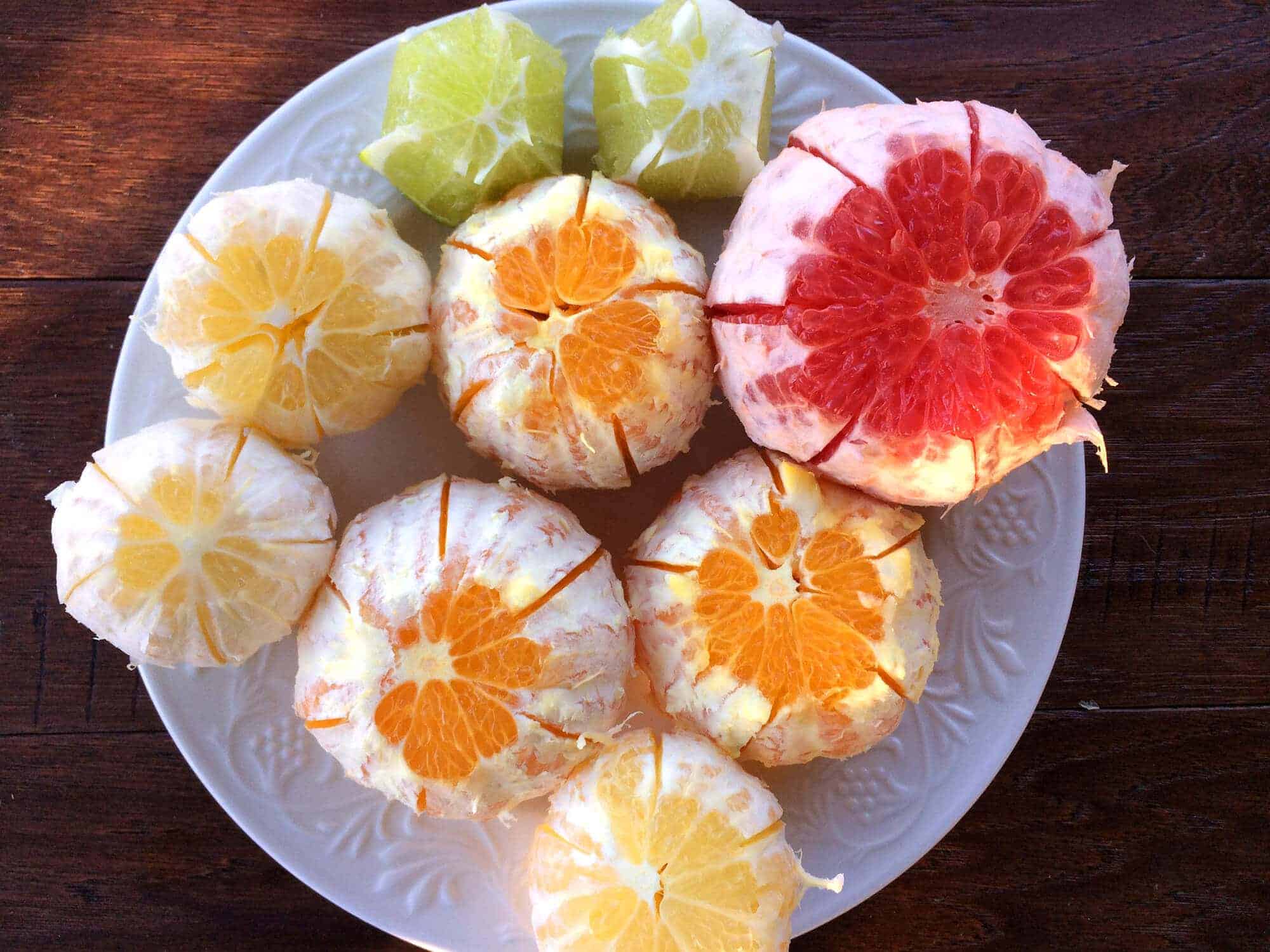
Boil the peels in water in a pot for 15 minutes. Drain the peels in a colander, rinse and then drain again. Discard the water from the pot.
**Note: To further reduce the bitter flavor repeat this step.

Add the sugar and fresh water to the pot and bring it to a boil. Boil it for a couple of minutes until the sugar is dissolved.
Add the citrus peels, reduce the heat and simmer for about 45-60 minutes, stirring occasionally, until the peels become translucent and the liquid becomes lightly syrupy.
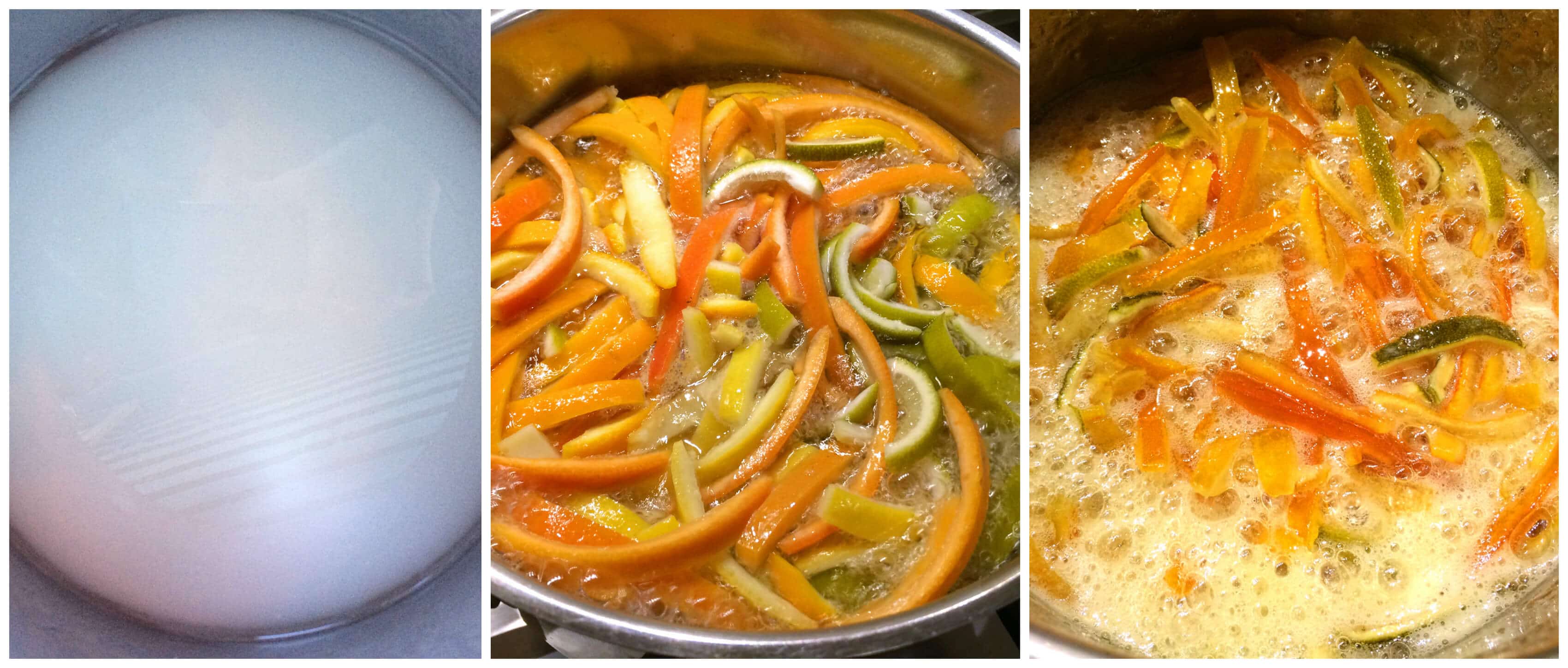
Use a slotted spoon to remove a few of the peels at a time and let the excess syrup drip off for a few seconds. Place the hot, wet peels in the bowl of sugar and toss to coat. If you’re making a large batch it’s easiest to place the sugar in a ziplock bag and shake the peels in it.
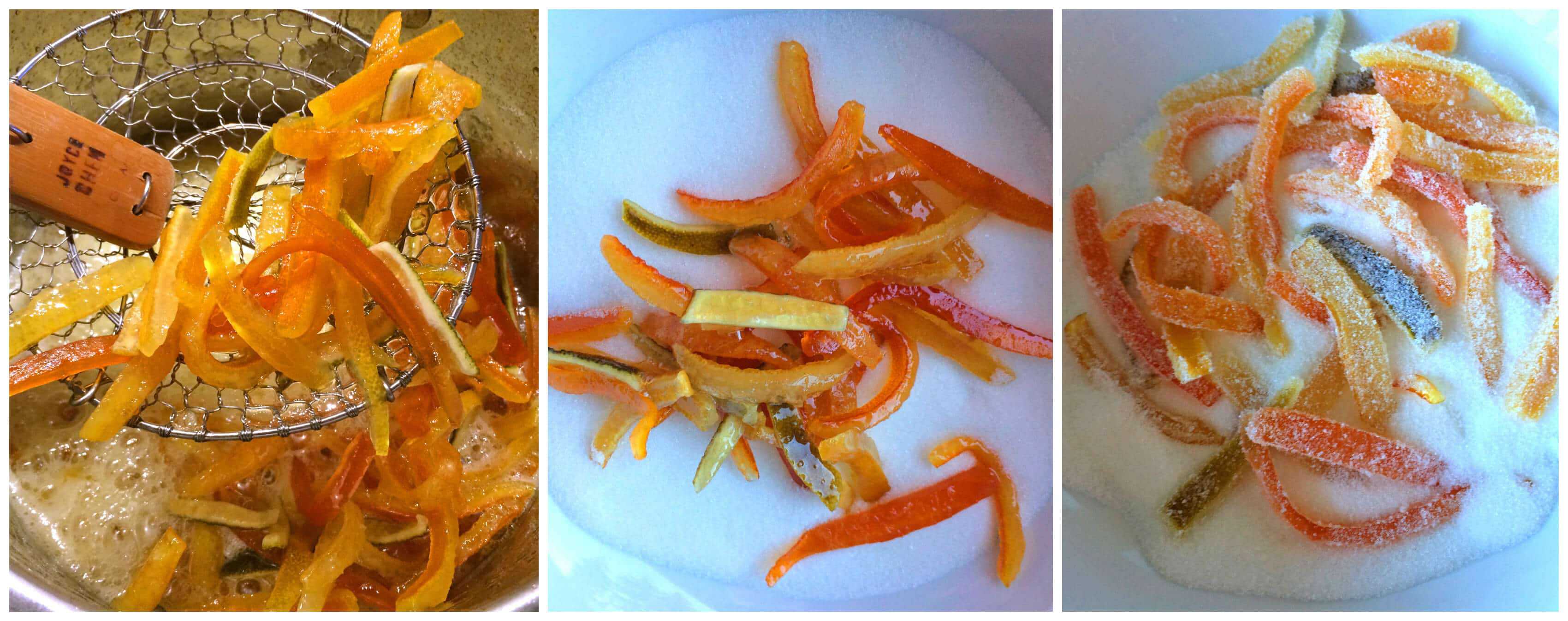
Spread the candied citrus peels out on a wire rack to cool and dry completely, 1-2 days.
Stored in an airtight container in a cool, dry place, the candied citrus peel will keep for at least a month. They’ll keep even longer in the fridge and for a few months frozen. (I usually keep them in a ziplock bag in the freezer and then conveniently grab whatever I need.)
Note: If you find your candied citrus peel gets hard after a while don’t worry – they will soften up beautifully as they bake in whatever recipe you add them to!
Tip: To keep the candied peels even softer you can limit the drying time, skip the final sugar coating step and put the peels in a ziplock bag and either refrigerate or freeze them.

Orange Simple Syrup
Finally, DON’T DISCARD THE CITRUS SYRUP!
This is a wonderful citrus-flavored simple syrup to add to your drinks for a wonderful kick of citrus flavor!
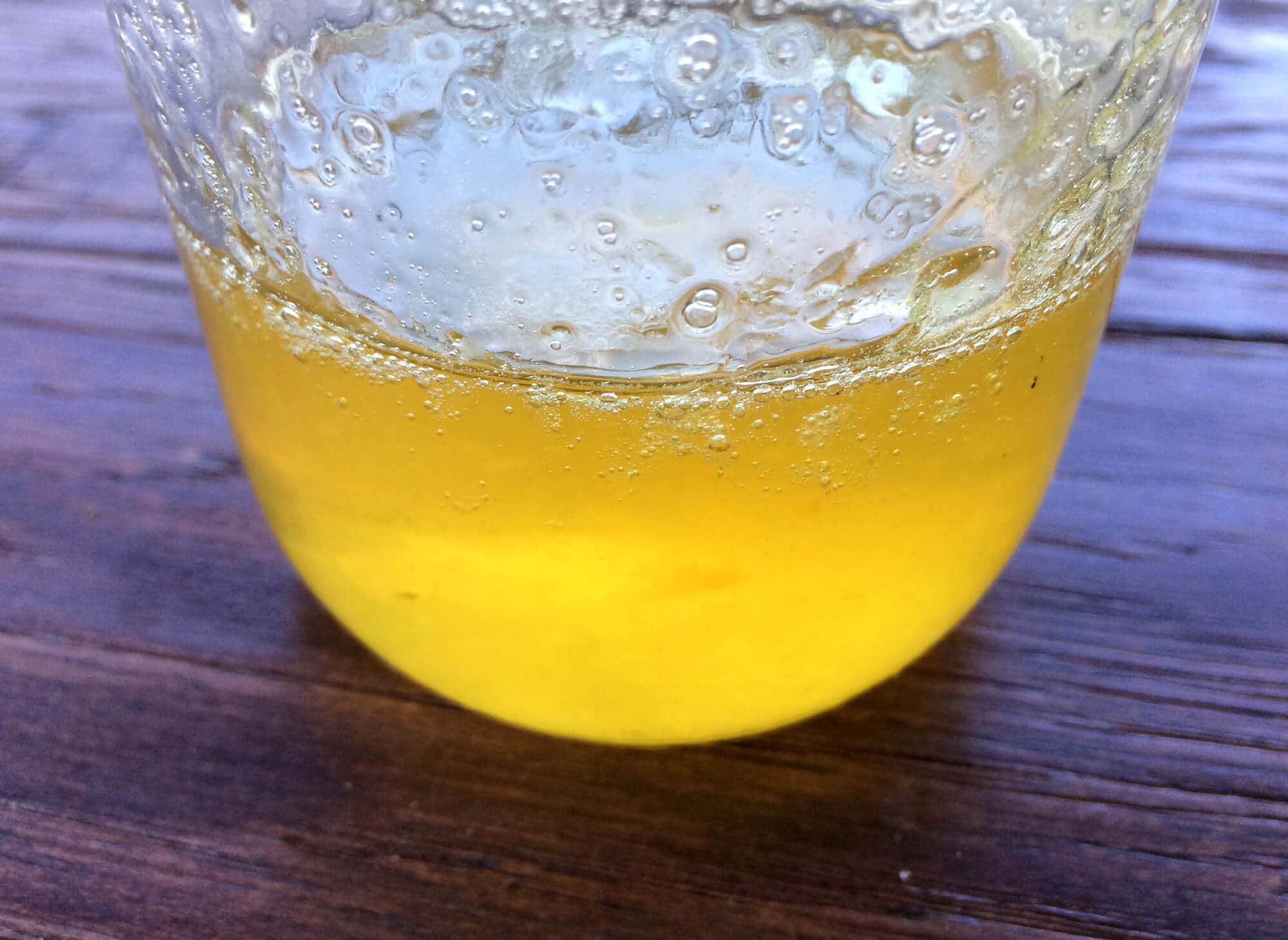
Enjoy!

Save This Recipe

Candied Orange Peel
Ingredients
- 3 large oranges (can also use the equivalent of lemons, grapefruits, limes, or citrus of your choice, thoroughly washed and scrubbed; organic is recommended)
- 2 cups granulated sugar
- 1 cup water
- Fine granulated sugar for coating
Instructions
- Slice both ends of the citrus fruits. Cut the peel on each each into 4 or more vertical segments, depending on the size of the fruit. Peel off each segment of rind. (You can remove a little of the white pith, though not necessary. The pith is bitter but the blanching process below will help reduce the bitterness. Note that if you remove the white pith, the thinner the peels are the harder and more leathery they will be when they’re candied.) Slice the peels into 1/4 inch wide strips. (Keep the peeled citrus for eating, cooking, juicing, etc)
- Boil the peels in a pot of water for 15 minutes. Drain the peels in a colander, rinse and then drain again. Discard the water from the pot.Repeat this process one or two more times to reduce the bitter flavor.
- Add the 1 cup of fresh water and the sugar to the pot and bring it to a boil. Boil it for a couple of minutes until the sugar is dissolved. Add the citrus peels, reduce the heat to low and simmer for 45-60 minutes, stirring occasionally, until the peels become translucent and the syrup becomes lightly syrupy (on a candy thermometer this will be be approximately soft ball stage or 235-240 F).
- Use a slotted spoon to remove a few of the peels at a time and let the excess syrup drip off for a few seconds. Place the hot, wet peels in a bowl of sugar or a ziplock bag with sugar in it and toss/shake to coat.Spread the candied citrus peels out on a wire rack to cool and dry completely, 1-2 days. *Note: Tossing them in sugar and letting them dry is only necessary if you're storing them at room temp for an extended period of time. They can be used immediately in any recipe that calls for them. And any leftovers can be put in a freezer bag/container and frozen as is until the next time you need them.Stored in an airtight container in a cool, dry place, the candied citrus peel will keep for at least a month. They'll keep even longer in the fridge and can be frozen for several months.Yields roughly 8 ounces of candied citrus peel depending on peel thickness.
Notes
*If you’d like to make more candied citrus peel, simply increase the amount of water and sugar by the same 1:2 ratio.
Nutrition
Originally published on The Daring Gourmet January 9, 2017



















These turned out perfect! We plan to use them in your stollen recipe next week.
also, I’m making Dominosteine this year for Christmas. Do you think that your recipe for quince paste would work for the “jelly” layer? Thanks in advance.
Wonderful, Jennifer, and I’m excited that you’re making the Stollen! Now that’s a truly awesome idea, incorporating quince jelly into the Dominosteine! Texture-wise I think it should be firm enough. But don’t hate me if it for some reason doesn’t work out for that purpose :) If you give it a try let us know how it goes!
Wow these came out absolutely excellent. Definitely the way to go versus store bought. Thanks for sharing such a great recipe!
Thanks, Arica, I’m so glad they were a success!
Thank you for the very detailed instructions and photos. I had candied yuzu peel i Japan and loved it. Now I can make it—if I can find fresh yuzu!
Hi. I’m wondering if you can make candied peels with a swerve type sweetener? Have you tried? I’m looking to make your stollen and just experimenting a bit. I saw your marzipan recipe had a switch to swerve and am just wondering about the peels.
Hi Robyn, I’m not entirely sure but it might work “okay.” It’s not going to turn syrupy as it boils but the sweetness should still penetrate the peels.
Good to know. I figured that. I guess this will have to just be an authentic recipe and to heck with the calories! It’s a holiday. Thank you!
Lol, Robin, that’s the spirit! :)
Tried these as my son asked why mincemeat for mince pie was called mincemeat which took me to your mincemeat with meat recipe.
They are very successful and the oranges and lemons make very tasty st clements gin cocktails. Only slight query is why it suggests 20 min cooking time when it took much longer. Looking forward to making mincemeat with them tomorrow. Christmas in England is not Christmas without mince pies but this will be my first time with real meat.
Wonderful! Thanks so much, Christopher, and I couldn’t agree more – mince pies are a must for a true English Christmas. That glitch is corrected, thanks for bringing it to my attention.
I make English Christmas goodies, plum pudding (no plums) and dark Christmas cake which both call for candied peel, which I have been buying, out of ignorance. Today I was shopping for this year’s baking and was frustrated at not being able to find enough of it, so decided to make it, since I have a bag of limes ready to be juiced. Only four stars, because I haven’t tried it yet, but the comments have been very helpful, especially about keeping it long term, as I can make the peel all year long and freeze it, or freeze the peel and make it as needed. I am not sure about how to juice the limes without the peel though.
Hi, I justo tríed making this recipe. I was very disappointed because my candied peels were awfully bitter. Could you please tell me what could I have done wrong and how should I do it next time to get it right? Thank you!
Hi Diana, the white pith of citrus peels that tastes bitter and the only way to remove the bitter flavor is to remove as much of the white pith as possible.
Thank you very much, I’ll try that.
Discard the first water after boiling five minutes. Add fresh water and repeat for a total of four times. That will get rid of the bitterness. Also, when simmering in the sugar water, continue to simmer until the sugar is absorbed into the peels.
I think it’s great. And it’s just like my mom did grapefruit peel. I have an old gas stove with pilot lights so the oven stays very warm. I dried mine on parchment there and it was great! I’m making tons to sell at the church bazaar. Just testing for now.
I e saved orange lime lemon and grapefruit peel for weeks in the freezer in a zip lock bag . Then make up you candied peels adjusting the sugar water quantity to keep the peels covered while simmering. The different colors add interest